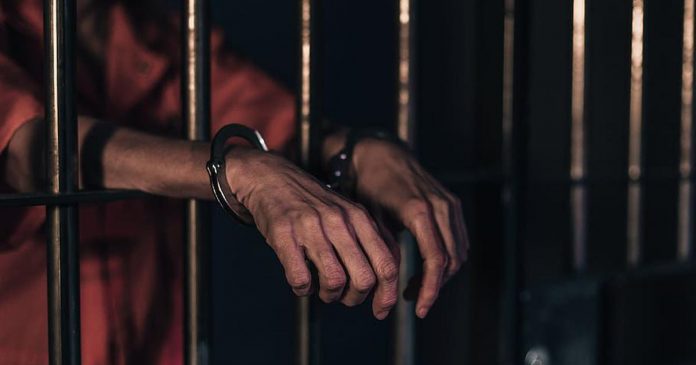This article is written by Prajwal Suman, pursuing BA.LLB. (Hons.) and Abhinav Chauhan, pursuing BBA.LLB.(Hons.) from National Law University Odisha, Cuttack.
Table of Contents
Introduction
The Coronavirus spread in India is at its peak with around 200,000 people infected. No vaccine exists yet to negate the effect of the virus, so the only way to stop its spread is through practising good hygiene standards and social distancing norms. The social distancing norms are being practised widely across the nation; nevertheless, there still exists a place where practising social distancing norms is a problem. The prisons in India are facing difficulties in maintaining social distancing norms as they have way more inmates being lodged there than their sanctioned limits; on an average, the occupancy rate is approximately 118% across the nation. Though the Supreme Court has taken cognizance of the matter and advised states to release some inmates, the situation is still not redeeming.
Supreme court on De- Congestion
In the past, the Supreme Court in Rama Murthy v. State of Karnataka observed that overcrowding contributes to a higher risk of disease and surveillance difficulties, thereby increasing the danger level. Moreover, the 78th Law Commission Report of India suggested the liberalization of conditions of release on bail.
Supreme Court in Re: Contagion of Covid-19 Virus in Prisons, directed states to constitute High Powered Committees (HPC) to determine which categories of prisoners can be released on parole or bail to decongest prisons. Further, Supreme Court suggested states to consider the release of prisoners who have been convicted or are under-trial for offenses for which prescribed punishment is up to 7 years or less, and the prisoners convicted for a lesser number of years than the maximum. Moreover, the Supreme Court also decreased the bail bond amount to Rs. 5,000 from Rs. 1,00,000 with two sureties of Indian Citizens for foreign nationals.
Most Vulnerable States and their Prisons
A recent Coronavirus outbreak left at least 130 inmates and staffers infected with the disease. Rajasthan houses 20134 inmates across its 144 jails, with an average occupancy rate of approximately 90%. Out of its 20134 prisoners, around 14481 are under-trials. Rajasthan has released 5763 inmates to bring down its overall occupancy rates to about 62%. The Jaipur District jail, in which 130 cases of Covid-19 were reported, houses 423 inmates for its sanction limit of 500 inmates. Though the occupancy rates are below the sanctioned limits, the social distancing was not maintained, the first person having symptoms was sharing barrack with 18 other inmates. Temporary hospital and quarantine centre has been created inside the jail complex to attend those who are ill, and severe cases are referred to SMS hospital.
In Delhi also, 18 inmates tested positive in its Rohini Jail. Prisons#39; occupancy rates in Delhi are not so reasonable, with an average of 175 % across its 16 jails. Delhi prisons are home to 17440 inmates, out of which 14799 are under-trials. The conditions are so adverse that Central Jail Complex No. 1, 3 & 4 have occupancy rates of 394%, 297% & 389%, respectively. Though, 3573 under-trial prisoners and convicts who have been accused/depicted in offenses punishable below seven years have been released on personal bonds. This release of prisoners will decrease the average to 139%, which means that the congestion levels are so high that even after releasing 3573 inmates, the situation is still alarming. Moreover, to avert any further possible outbreak of Coronavirus, as it happened in the case of the Rohini district jail, following stringent norms of social distancing is a must.
Although almost every state has taken measures to release its prisoners effectively, some states still need to look upon the possibility of a large number of COVID-19 cases, if anything goes wrong. Uttar Pradesh, home to 1,04,011 inmates, which is the highest in India, can house only 58914 inmates, which makes it clear that the jails in UP are the most crowded jails in the nation with an average occupancy rate of 176%. UP is releasing around 12055 inmates to decongest its over-crowded prisons. The decongestion exercise will bring down the average occupancy rate to 156%, under which ensuring social distancing norms is still tricky. Recently 10 cases of COVID-19 were reported in Agra Central jail, with 1350 inmates with 112 staffers.

Gujarat, with a pre-lockdown prison population of around 15000, has ordered to release 2500 inmates on interim bail, probation, and furlough. However, this is not enough as the state prisons had an occupancy rate of 113% earlier, which has now decreased to 93%. Gujarat remains 3rd on the state-wise list of highest COVID-19 cases with around 6150 active cases as on June 3. Eleven inmates and three officials at the Ahmedabad Central Jail were found positive.
Madhya Pradesh has 42,000 prisoners lodged in its jails, with an overall occupancy rate of 147%. MP has released 6500 prisoners yet, which is not enough to suffice as the condition after the virus outbreaks would be unmanageable. The risk is relatively higher in these states as the occupancy rate is extreme. Nineteen positive cases emerged in Indore Central Jail a few days back, while the respective state has over 2900 active cases. No subsequent order, since April, has been released by the HPC of MP. However, the state is inclined towards releasing prisoners on bail on conditions like downloading the Aarogya Setu App, donating to the PM CARES Fund, or registering themselves as a COVID-19 Warrior.
Maharashtra is the most vulnerable state to coronavirus with more than 70,000 reported cases of COVID-19. Maharashtra’s prisons saw its first Coronavirus case in Arthur Road Jail, where the occupancy rate is more than 400%, on May 2, which soon rose to 185 cases on May 10 including jail officials. Later, a woman inmate at Byculla prison and 10 other prisoners were infected at the Satara district prison. Three deaths were also reported in three different prisons in the state, therefore making Maharashtra the first one to have reported deaths among incarcerated prisoners. Soon after, the HPC decided to release 50% of prisoners on May 12, amounting to 17,000 prisoners approximately, out of which 7000 were released earlier on bail and emergency parole.
After the above step, the state government amended Prison Rules on lines of suggestions by the HPC to consider under-trials/ convicts being punished for offenses where maximum punishment was less than seven years for bail/emergency parole for 45 days and convicts penalized for more than seven years were considered for emergency parole if the convict returned to prison on time on the last two releases. Maharashtra prisons were home to around 35,000 prisoners before lockdown with an occupancy rate of 149%, decreasing it to 75% post-release of all such prisoners on bail and parole. Nevertheless, only 8,381 inmates are released.
Disparity between Actuals and Expected
The difference arising between inmates to be released and actual number of inmates released is due to the fact that though the HPC has suggested the release, the process of getting bail is still the same. Most of the inmates to be released are under-trials, they have to approach the court for their bail, and courts are still reluctant to give them bail on the apprehension of their unavailability during the trial or their tampering with the evidence.
Moreover, the functioning of courts amid nation-wide lockdown as such, the urgent matters are only listed. In a recent case at the High Court of Karnataka, a 19-year old booked under UAPA in February moved to Karnataka High Court after her bail application was rejected by Session Court, but due to nationwide lockdown and only listing of urgent matters, her case is yet to get a detailed hearing.
Conclusion
While some states are only considering those prisoners for release, who are accused/punished for offenses of punishment less than 7 years, they should also consider releasing prisoners with the sentence of more than seven years based on their previous returns on parole/furlough (similar to Maharashtra). Prison rules should be diluted and the judge’s attitude should incline towards the release of under-trials as Retd. Justice BN Srikrishna said, “The judges are not applying their minds when they are rejecting bail. Bail is the rule and jail is the exception.” Lately, Justice A.J. Bhambhani, while granting bail to a Delhi riots’ accused, said, “The remit of the court is to dispense justice in accordance with the law, not to send messages to society." Also, it is quite evident to say that Coronavirus is fatal among the people of old age and people with weak immunity like people with pre-existing medical conditions such as cardiovascular disease and diabetes.
So, the HPCs should consider releasing older prisoners to ensure their health or otherwise, better-quarantining facilities for them in the jail. The orders of the Supreme Court and the High-Powered Committees are welcomed; however, it does not end here. The real cause of worry is that if Jaipur District jail, having an occupancy rate of 84%, can have 130 people infected from Covid-19, how the situation is managed in prisons having inmates way above their sanctioned limits. And if Coronavirus gets inside these prisons, how will the authorities handle it. In the Jaipur case, 30% of the inmates tested positive for Covid-19; the scenario of these overcrowded jails is terrifying to imagine. All states should consider asserting more provisions in their Prison Rules and amend them according to the increasing COVID-19 cases and the risk involved for the inmates at prisons. More random testing should be done, and proper quarantine facilities should be provided to the inmates. The outbreak is a global pandemic but to deal with this, the country calls for a proper vigilance on what is being done and what more should be done.
LawSikho has created a telegram group for exchanging legal knowledge, referrals and various opportunities. You can click on this link and join:











